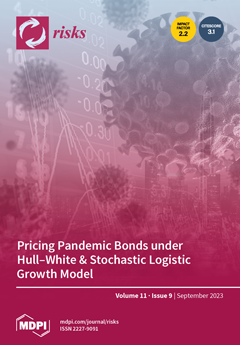Healthcare fraud is intentionally submitting false claims or producing misinterpretation of facts to obtain entitlement payments. Thus, it wastes healthcare financial resources and increases healthcare costs. Subsequently, fraud poses a substantial financial challenge. Therefore, supervised machine and deep learning analytics such as random
[...] Read more.
Healthcare fraud is intentionally submitting false claims or producing misinterpretation of facts to obtain entitlement payments. Thus, it wastes healthcare financial resources and increases healthcare costs. Subsequently, fraud poses a substantial financial challenge. Therefore, supervised machine and deep learning analytics such as random forest, logistic regression, and artificial neural networks are successfully used to detect healthcare insurance fraud. This study aims to develop a health model that automatically detects fraud from health insurance claims in Saudi Arabia. The model indicates the greatest contributing factor to fraud with optimal accuracy. The labeled imbalanced dataset used three supervised deep and machine learning methods. The dataset was obtained from three healthcare providers in Saudi Arabia. The applied models were random forest, logistic regression, and artificial neural networks. The SMOT technique was used to balance the dataset. Boruta object feature selection was applied to exclude insignificant features. Validation metrics were accuracy, precision, recall, specificity, F1 score, and area under the curve (AUC). Random forest classifiers indicated policy type, education, and age as the most significant features with an accuracy of 98.21%, 98.08% precision, 100% recall, an F1 score of 99.03%, specificity of 80%, and an AUC of 90.00%. Logistic regression resulted in an accuracy of 80.36%, 97.62% precision, 80.39% recall, an F1 score of 88.17%, specificity of 80%, and an AUC of 80.20%. ANN revealed an accuracy of 94.64%, 98.00% precision, 96.08% recall, an F1 score of 97.03%, a specificity of 80%, and an AUC of 88.04%. This predictive analytics study applied three successful models, each of which yielded acceptable accuracy and validation metrics; however, further research on a larger dataset is advised.
Full article





